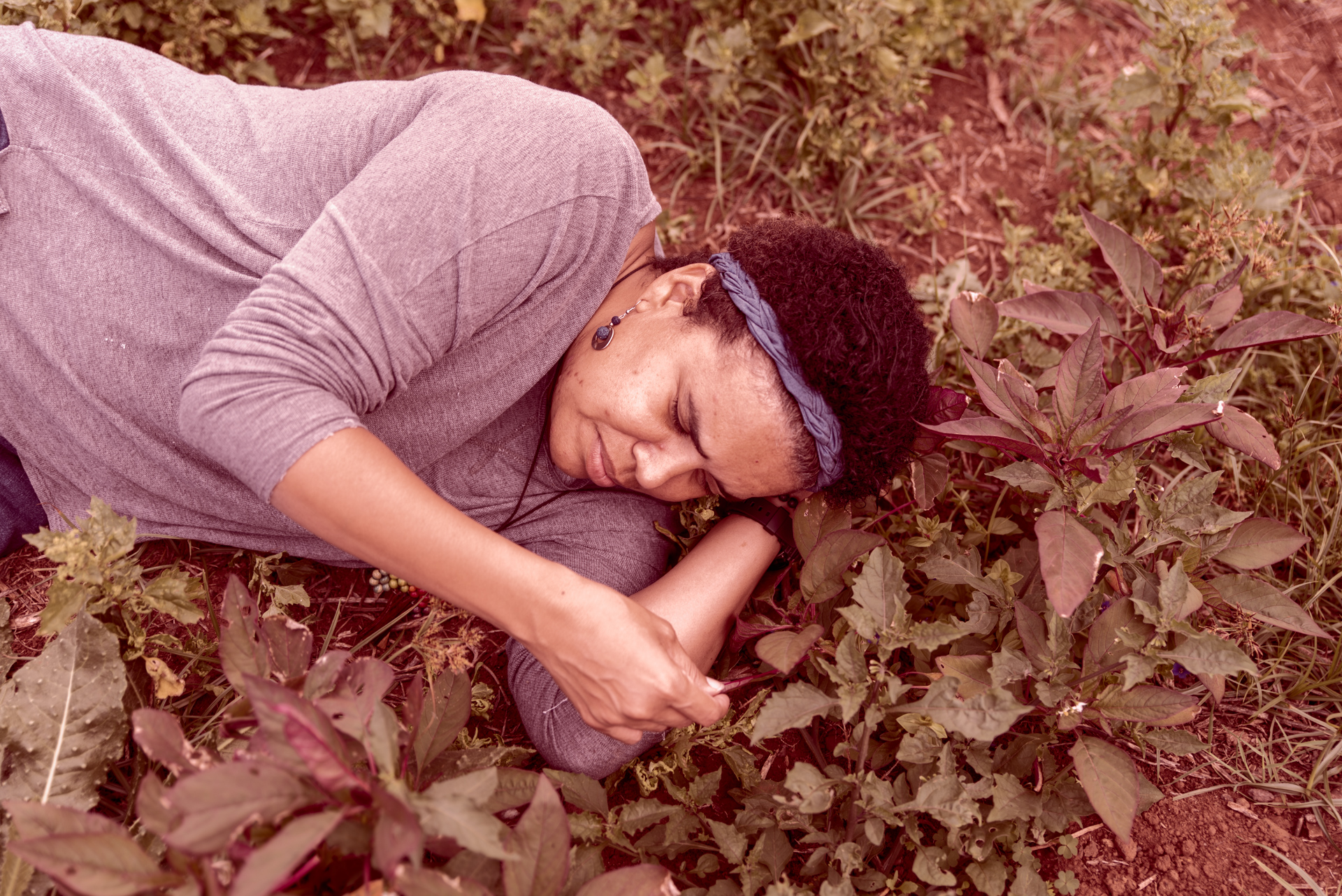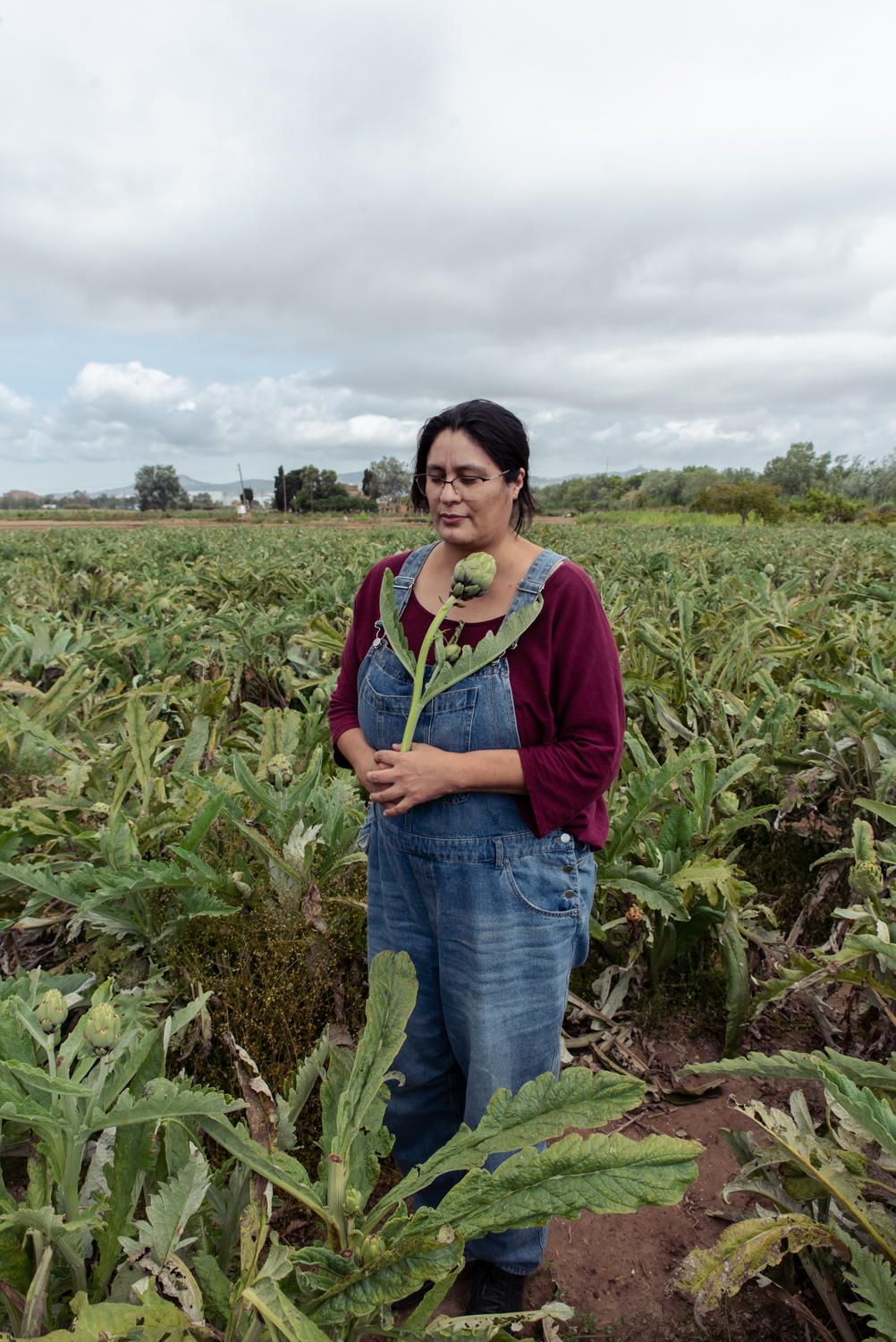Jardín de Naturalización (The Garden of Naturalisation) is an artistic research project on the naturalisation of immigrants in Spain, or how the natural sciences can define a national identity.
People who come from former Spanish colonies represent a significant number of naturalised citizens in Spain. But they are not always considered an integral part of Spanish culture, like tomatoes or potatoes. People with a background of migration are often depicted as ‘invasive plants’. I am using photography and research to deconstruct these stereotypes.
In law, naturalisation describes the process of becoming a citizen of another country. It is an assessment of whether a foreigner is integrated into the receiving society, meeting the requirements to be recognised as a citizen with the same rights as native inhabitants. Naturalisation is also a concept used in the natural sciences, referring to the process of introducing exotic species into a new environment. In nature, naturalisation can occur accidentally, but it is usually a process controlled by humans pursuing the benefits of introducing new species.
Spain has a long tradition of acclimatising exotic species with high commercial value. From colonial times to today, the country has played an essential role in growing fruit and vegetables in Europe. Spain has also become one of the leading ‘gardens of naturalisation’ for foreigners in the EU.
Between 2010 and 2019, 1,285,656 people acquired Spanish citizenship (according to Eurostat). There is little known about these ‘new’ Spaniards. Some have strong historical links with Spain (e.g. Latino Americans and Moroccans) and others do not (e.g. Eastern Europeans). Unlike France or the UK, Spain has not yet offered them the opportunity to play an important part in public life.
Until recently, Spain was not considered a country of immigration. It has a scarce visual account of people who have moved to the country. I want to address this gap through my photography project, which documents people whose relationship with Spain is based on a personal decision.
This interdisciplinary project also aims to broaden the definition of Spanish identity, which has been a recurrent element in Spanish photography. However, the search for roots is often limited to folklore, religion or literature.
![]()
Aichryson laxum is an endemic plant of the Canary Islands. It transforms its colour into rose or red to withstand high temperatures. Resilience is a common trait in the stories of naturalised Spanish citizens.
This project is supported through a Mead Fellowship Award, granted by the University of the Arts London.
People who come from former Spanish colonies represent a significant number of naturalised citizens in Spain. But they are not always considered an integral part of Spanish culture, like tomatoes or potatoes. People with a background of migration are often depicted as ‘invasive plants’. I am using photography and research to deconstruct these stereotypes.
In law, naturalisation describes the process of becoming a citizen of another country. It is an assessment of whether a foreigner is integrated into the receiving society, meeting the requirements to be recognised as a citizen with the same rights as native inhabitants. Naturalisation is also a concept used in the natural sciences, referring to the process of introducing exotic species into a new environment. In nature, naturalisation can occur accidentally, but it is usually a process controlled by humans pursuing the benefits of introducing new species.
Spain has a long tradition of acclimatising exotic species with high commercial value. From colonial times to today, the country has played an essential role in growing fruit and vegetables in Europe. Spain has also become one of the leading ‘gardens of naturalisation’ for foreigners in the EU.
Between 2010 and 2019, 1,285,656 people acquired Spanish citizenship (according to Eurostat). There is little known about these ‘new’ Spaniards. Some have strong historical links with Spain (e.g. Latino Americans and Moroccans) and others do not (e.g. Eastern Europeans). Unlike France or the UK, Spain has not yet offered them the opportunity to play an important part in public life.
Until recently, Spain was not considered a country of immigration. It has a scarce visual account of people who have moved to the country. I want to address this gap through my photography project, which documents people whose relationship with Spain is based on a personal decision.
This interdisciplinary project also aims to broaden the definition of Spanish identity, which has been a recurrent element in Spanish photography. However, the search for roots is often limited to folklore, religion or literature.

Aichryson laxum is an endemic plant of the Canary Islands. It transforms its colour into rose or red to withstand high temperatures. Resilience is a common trait in the stories of naturalised Spanish citizens.
This project is supported through a Mead Fellowship Award, granted by the University of the Arts London.
 Nancy is a naturalised Spanish citizen from Cuba. She is a scientist. She is currently searching for new sustainable control strategies for citruses under the threat of climate change. The main objective is to prevent HLB (Huanglongbing, also known as Greening) from entering the EU.
Nancy is a naturalised Spanish citizen from Cuba. She is a scientist. She is currently searching for new sustainable control strategies for citruses under the threat of climate change. The main objective is to prevent HLB (Huanglongbing, also known as Greening) from entering the EU. Laura is a naturalised Spanish citizen and came to Spain from Argentina. She has a two-way relationship with the tierra which means both land and soil in Spanish. She considers Spain her home, but she is still missing "the wet soil" of Argentina.
Laura is a naturalised Spanish citizen and came to Spain from Argentina. She has a two-way relationship with the tierra which means both land and soil in Spanish. She considers Spain her home, but she is still missing "the wet soil" of Argentina. The Agricultural Research Institute of the Canary Islands (ICIA) is a research and experimental centre. This room is part of the main facilities of ICIA. Plants are at the heart of the ICIA different research projects: from combating diseases to improving the productivity of fruits and vegetables. The Acclimatisation Garden of La Orotava in Puerto de la Cruz (Tenerife) is also part of ICIA. It was created in 1788, and it is the oldest botanical garden in Spain after the Royal Botanical Garden of Madrid.
The Agricultural Research Institute of the Canary Islands (ICIA) is a research and experimental centre. This room is part of the main facilities of ICIA. Plants are at the heart of the ICIA different research projects: from combating diseases to improving the productivity of fruits and vegetables. The Acclimatisation Garden of La Orotava in Puerto de la Cruz (Tenerife) is also part of ICIA. It was created in 1788, and it is the oldest botanical garden in Spain after the Royal Botanical Garden of Madrid.
